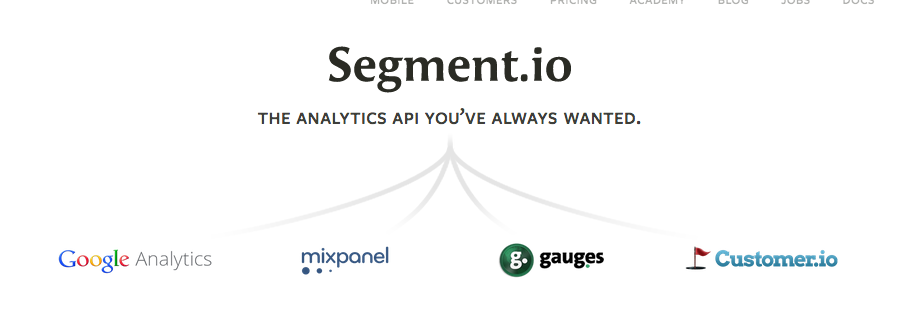Marketing your Tech Company is getting SaaSy: Here's how to avoid problems
It seems like there’s been a large increase of software over the past year to help online marketers. There’s software to help avoid churn in billing, there’s software to help with lifecycle emails, and plenty of options for everything in between.
I’m really digging this – there’s more tools to help marketers understand customers, and reach them at optimal points while using the software. While this is all hunky-dory, there’s some potential problems that should be avoided.
You need a Core analytics provider
This first rule is pretty straightforward, but I highly advise against bouncing back and forth between analytics providers, especially when collecting/analyzing your data. Sure, it makes more sense to view traffic referrers in Google Analytics as opposed to Mixpanel, but oftentimes there can be discrepancies (especially when you need exact #’s for a specific experiment.)
Leave anything funnel-related to Mixpanel/Kissmetrics. Use Google analytics for the rest.
Also, don’t construct a funnel based on data from Analytics, and other data from another analytics provider. Make sense?
Should I test all the things?
If you’re like me, there’s cool tech that piques your interest and might be useful. That’s cool – but most of these providers take time to setup. If you don’t setup tracking/goal tracking code yourself, I highly recommend that you NOT push this on the engineering team constantly. Use Segment.io instead. The benefits are:
- Your engineers will love you because the code looks sexy and isn’t messing up their beautiful code
- Plug and play – install the tracking code, and the marketing team can use a variety of services without installing tracking code every time.
Win win situation – that’s why I really dig this service. It solves legitimate problems.
Find out what REALLY Matters
This is another simple rule – with the firehose of data you get from a variety of services, it’s easy to get overwhelmed, and spend the majority of your day looking at metrics that don’t matter.
Like any campaign/experiment you run, you need to distill the experiment into a single metric that you can measure and determine success/failure.
The dudes at Lean Analytics wrote a great post about what a metric should have (I’ll summarize below):
- It changes the way you behave
- Is a ratio/rate
- Is Understandable
It’s pretty buzzword heavy, but I’ll summarize: The metric you use to measure needs to be simple to understand.
****Software will never tell you what you should do next – that’s why marketers exist! Just do yourself a favor and simplify.
Keep Track of Experiments
So you have all these cool tools, and it’s time to start running experiments – great! As a word of caution, if you plan on using a tool for a few weeks, seeing if it works, and then ditching it, you either need to 1.) Export the data for later analysis, or 2.) Create a document to track the experiments you run.
For further reading, I wrote about this in a past article, but I fully plan on diving deeper in the near future.
